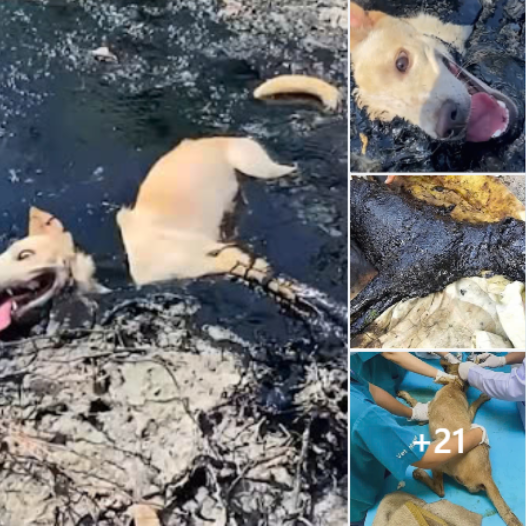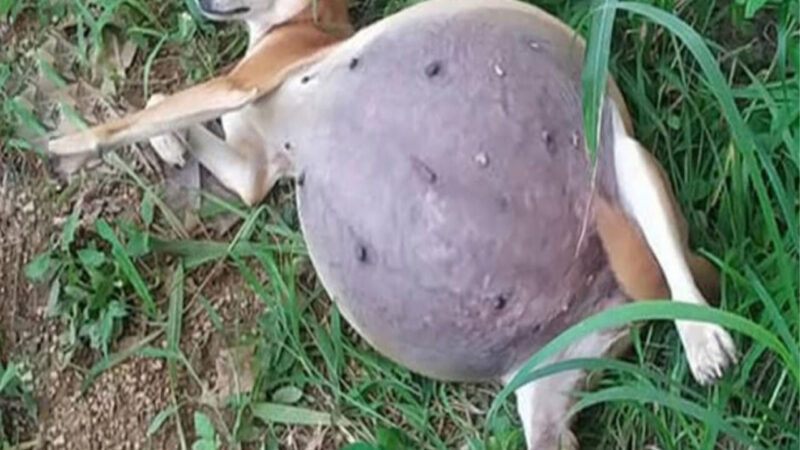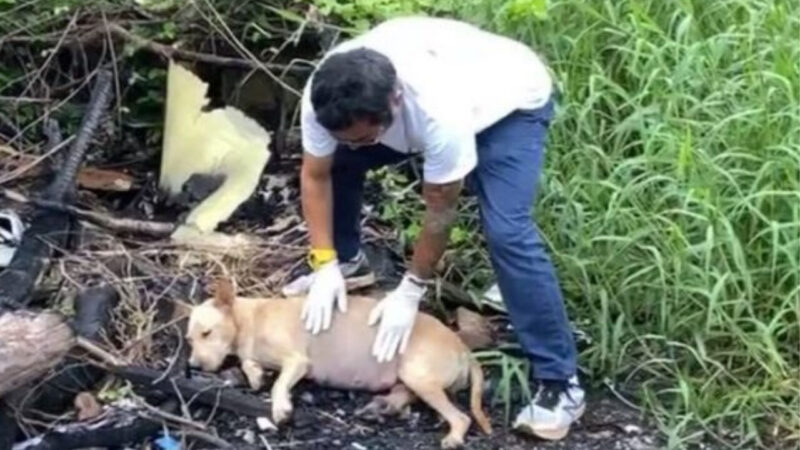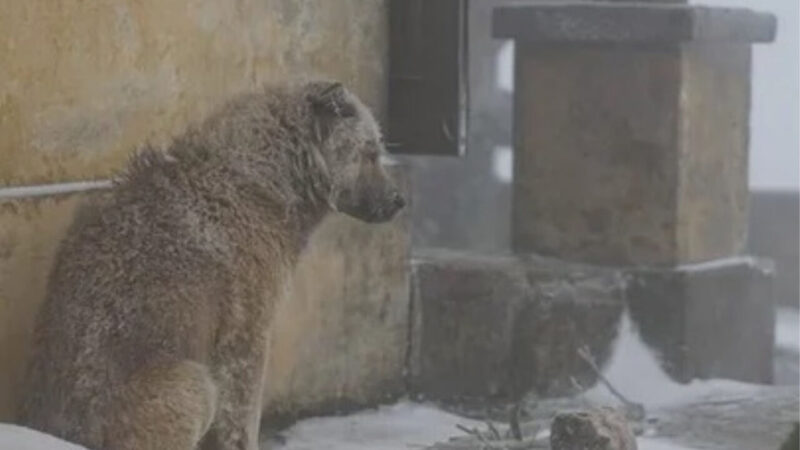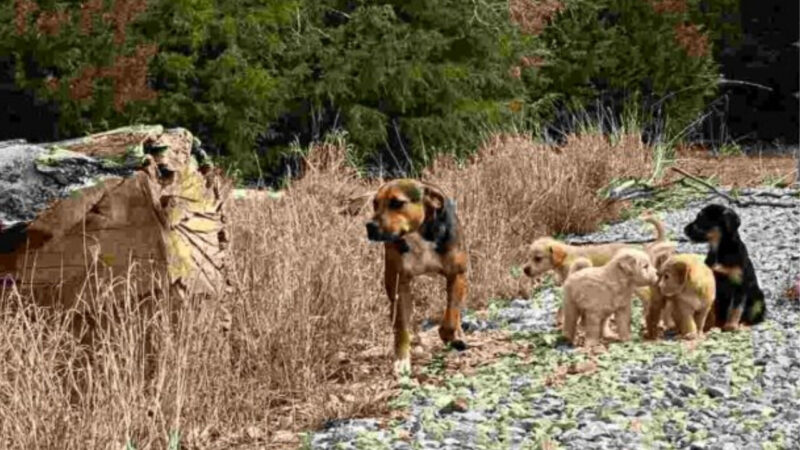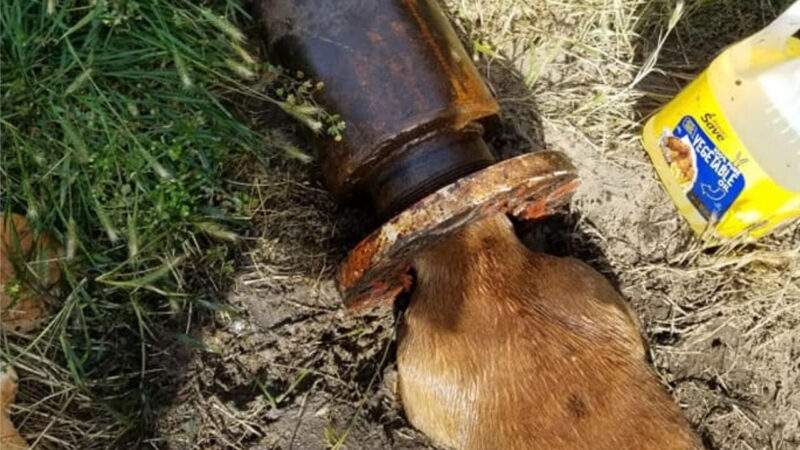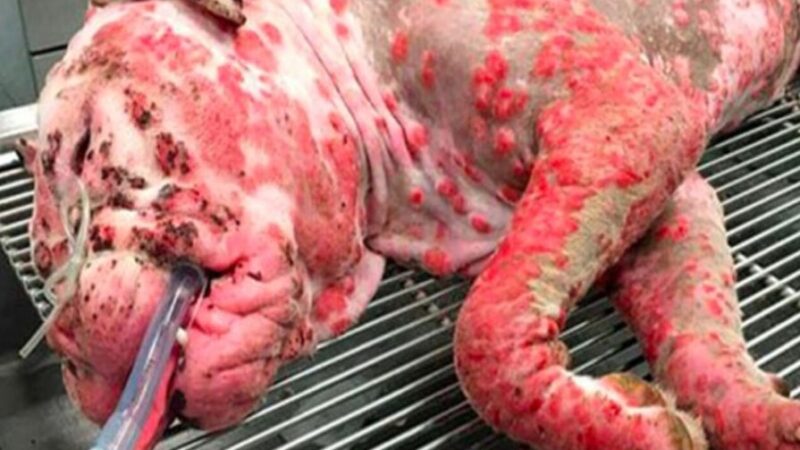The dog found trapped in toxic molten rubber could not move or ask for help
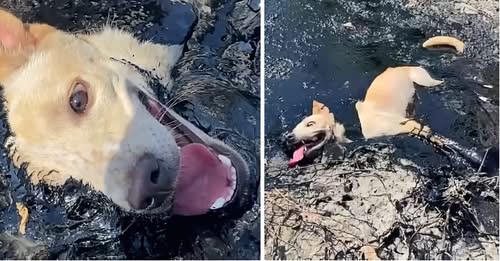
Dogs are gentle, curious, and trusting creatures. Unlike humans, they don’t often perceive danger or recognize harmful intentions. Their innocent nature makes them vulnerable, especially in urban environments not built for their safety. For stray dogs, survival on the streets means facing countless dangers—hunger, disease, neglect, and sometimes, even life-threatening traps they can’t possibly predict. One such tragedy almost ended the life of a small puppy in Thailand, until fate intervened in the form of compassionate strangers.
This particular incident happened in the industrial area of Nakhon Nayok, a province in central Thailand. In a region filled with construction debris, machinery, and leftover materials, it’s no place for a young, defenseless puppy. But like many stray animals, he had no choice. He was likely wandering through the area in search of food or shelter when tragedy struck. Without warning, he stepped into a thick, black puddle of melted tar—asphalt residue that had been carelessly dumped in a neglected corner of the site. Before he knew it, he was stuck.
The more he tried to struggle, the more he became entangled. His little legs, belly, and body quickly sank into the viscous substance. Soon, only his head was above the surface. The thick tar clung to his fur and skin like glue, hardening as it cooled. He was completely immobilized—unable to move, unable to cry for help, unable to escape. The sticky material even threatened to choke him. It was a horrifying scene—one that could have easily ended in tragedy if not for a timely miracle.
Hours passed, perhaps even an entire day, as the puppy remained trapped in the hardened tar. Miraculously, he had managed to keep his head upright, just enough to breathe and occasionally lap up some rainwater that had pooled nearby. It was likely this small access to water that kept him alive until help arrived.
The miracle came in the form of a passerby—a man walking near the abandoned site who noticed something strange in the pile of debris. He moved closer and was shocked to find a living puppy embedded in the asphalt. The man didn’t hesitate. He immediately contacted local animal rescue volunteers and emergency services for help.
When the rescue team arrived, they were heartbroken by the scene. Veterinarians, local volunteers, and industrial workers all joined forces to save the tiny life clinging to survival. A bulldozer was brought in to carefully extract the section of hardened tar surrounding the dog. It was a delicate operation—they couldn’t afford to hurt him any further.
Once the chunk of asphalt with the puppy was removed, the team transported him to a nearby open area where they began the painstaking process of cleaning him. Removing tar from fur is not easy. It’s a tedious and slow task, requiring patience, care, and specific tools. Volunteers used gasoline oil, a known solvent for tar, applying it gently over the matted fur. Piece by piece, the black, sticky mess was dissolved and wiped away. It took over two long hours to free the dog from the trap completely.
The puppy was exhausted, but finally clean. His rescuers wrapped him in a towel and brought him to a veterinary clinic for further examination. Fortunately, he had suffered no broken bones or internal injuries—only exhaustion, dehydration, and severe skin irritation from the chemicals. The veterinarians treated his wounds, administered fluids, and monitored his condition. They gave him a name: Mali, which in Thai means “jasmine”—a fitting name for a dog that had bloomed in the face of adversity.
In the days that followed, Mali’s transformation was remarkable. From a frightened, filthy puppy with barely a pulse, he blossomed into a cheerful, grateful little dog with bright eyes and a wagging tail. Photos shared by the rescue team showed Mali beaming with joy, a wide, innocent grin stretching across his face as he began to trust the humans who had saved him.
The story of Mali quickly spread across social media in Thailand and beyond. People were both heartbroken by the cruelty of careless waste disposal and touched by the compassion shown by the rescuers. The industrial site’s reckless habit of dumping hot tar in an open area had nearly cost an innocent life. Sadly, it’s a reminder of the silent suffering that often goes unnoticed in the corners of our cities.
Mali’s story is more than just a rescue tale—it’s a powerful call for responsibility and kindness. In many parts of the world, animals like Mali suffer not because of cruelty, but because of indifference. People throw trash into the streets, pour chemicals into the environment, and ignore the silent eyes of animals that walk among them. But just one act of compassion—like that of the man who stopped to check on a strange sight—can mean the difference between life and death.
It’s not hard to imagine what would have happened if no one had come. Mali would have perished alone in that pile of tar, his little heart slowly giving out, his bright eyes never opened again. But because one person cared enough to act, and because a team of kind-hearted people worked together, he was given another chance.
Today, Mali lives under the care of one of the rescue volunteers who helped save him. He now enjoys a warm bed, regular meals, and endless affection. He no longer has to scavenge through construction sites or fear the cruel indifference of the world. His new life is filled with love, safety, and dignity.
This story reminds us that animals, especially strays, depend on us—not for luxury, but for survival. A little awareness, a little compassion, and a little responsibility can go a long way. Cities may not be made for animals, but our hearts should be.
Let Mali’s rescue be a symbol of hope and a reminder to always stop and care. Because in that moment of hesitation, in that single decision to look, to help, to call for assistance—you might just save a life.
